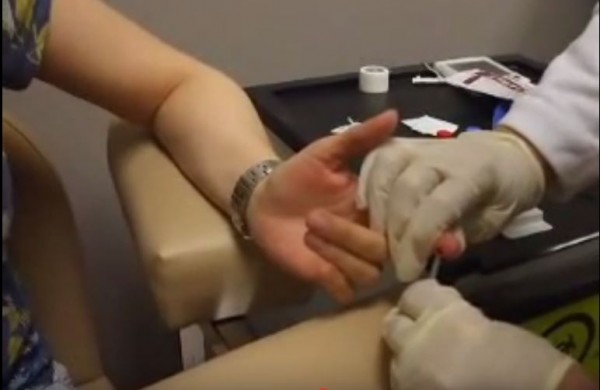By Jacques Strauss, | June 05, 2017

A medical expert takes blood sample for HIV testing.
Poor quality HIV testing resulted to HIV misdiagnosis of a woman in Bangkok. As a result of such medical lapse, the formerly identified HIV/AIDS patient is taking legal action against the hospital.
A 23-year-old Thai woman has been living the past 15 years thinking that she has AIDS. Along with such incorrect information, the woman has been taking HIV/AIDS medication the past 15 years, convinced that she has an infection.
Like Us on Facebook
Apart from taking medication which is not suitable for her, Suthida Sangsumart also experienced public condemnation. As a result being stigmatized by the people around her, the misdiagnosed patient has moved from her hometown.
"I started taking the medicine on HIV disease since then. I had to move to Samut Prakarn province after people in my hometown disliked me because of my father's cause of death and the doctor's diagnosis that I had Aids," The Star quoted Sangsumart as saying.
It was during her medical examination at the Thai Red Cross Society's Anonymous Clinic last week, which she received the new and official result. The test came out and revealed that she is in fact free such disease, HIV negative.
In view of the given facts, the woman misdiagnosed with HIV/AIDS wants the hospital to take full responsibility. With her lawyer, lawyer Songkran Achariyasab, they will seek for legal remedy concerning the medical malpractice.
As of the current writing, the World Health Organization or WHO revealed that there is a high rate of HIV misdiagnosis, as high as 10.5%. Such statistical significance led the organization and its global partners to convene and discuss ways to improve HIV testing.
Based on the study made by the WHO, most of the errors are preventable. Some of which may include but not limited to suboptimal testing strategies, testers having difficulty interpreting weak reactive results; poor management and supervision of inspectors and quality systems in laboratories and facilities.
Watch here below how testing for infection is taken:
-
Use of Coronavirus Pandemic Drones Raises Privacy Concerns: Drones Spread Fear, Local Officials Say

-
Coronavirus Hampers The Delivery Of Lockheed Martin F-35 Stealth Fighters For 2020

-
Instagram Speeds Up Plans to Add Account Memorialization Feature Due to COVID-19 Deaths

-
NASA: Perseverance Plans to Bring 'Mars Rock' to Earth in 2031

-
600 Dead And 3,000 In The Hospital as Iranians Believed Drinking High-Concentrations of Alcohol Can Cure The Coronavirus

-
600 Dead And 3,000 In The Hospital as Iranians Believed Drinking High-Concentrations of Alcohol Can Cure The Coronavirus

-
COVID-19: Doctors, Nurses Use Virtual Reality to Learn New Skills in Treating Coronavirus Patients










